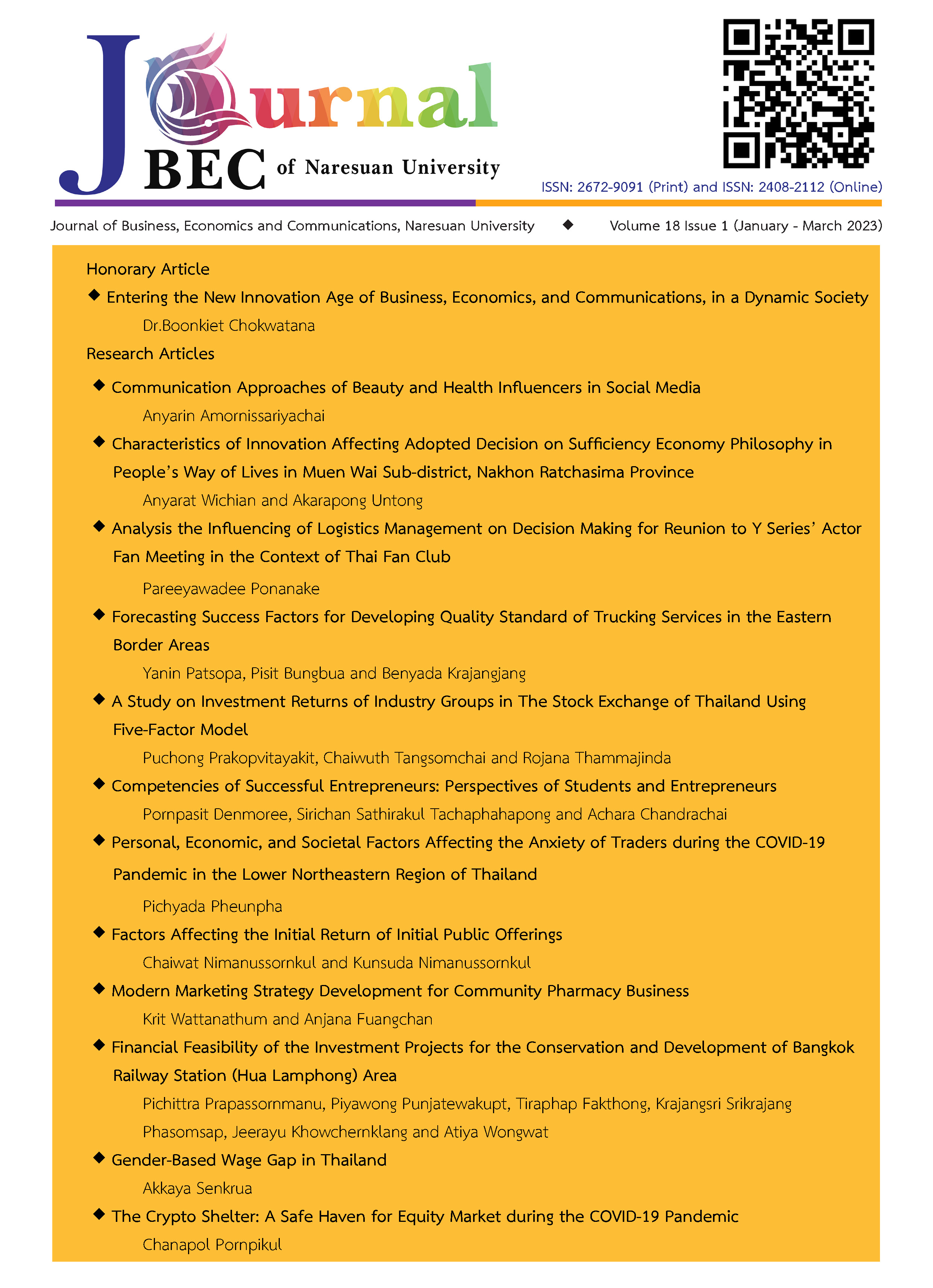Financial Feasibility of the Investment Projects for the Conservation and Development of Bangkok Railway Station (Hua Lamphong) Area
Main Article Content
บทคัดย่อ
This paper studies the financial feasibility of the conservation and development of the Bangkok Railway Station (Hua Lamphong). There are three prospect investment schemes which consist of 1) conservation-based development, 2) creative-economy-based development, and 3) commercial-based development. This paper uses the Discount Cash Flow model with an investment period of 30 years. Several results emerged. First, the conservation based development has a negative NPV of 3,261 million bahts with a payback period of 15 years. The creative- economy-based development has a positive NPV of 12,818 million bahts with a payback period of 7 years. Meanwhile, the commercial-based development has a positive NPV of 18,369 million bahts with a payback period of 6 years. Second, our sensitivity analysis shows that occupancy rate and pricing significantly determine the volatility of the projects' returns.
Article Details

อนุญาตภายใต้เงื่อนไข Creative Commons Attribution-NonCommercial-NoDerivatives 4.0 International License.
เอกสารอ้างอิง
Bank of Thailand. (2021). Deposit rates for individuals of commercial banks. Retrieved May 20, 2021, from https://www.bot.or.th/english/statistics/_layouts/application/interest_ rate/in_rate.aspx
Bitar, Z., Khamis, I., Alsaka, Z. and Jabi, S. A. (2015). Pre-feasibility Study for Construction of Mini Hydro Power Plant. Energy Procedia, 74(August), 404-413.
Boardman, A. E., Greenberg, D. H., Vining, A. R., and Weimer, D. L. (2018). Cost-Benefit Analysis Concepts and Practice (5th Ed.). Cambridge: Cambridge University Press.
Campbell, H. F. and Brown, R. (2003). Benefit-Cost Analysis: Financial and Economic Appraisal Using Spreadsheets. Cambridge: Cambridge University Press.
Fakthong, T., Prapassornmanu, P. and Punjatewakupt, P. (2021). Financial Feasibility and Management for a Sustainable Land Development of Bangkok Railway (Hua Lam Phong) Station. Bangkok: Program Management Unit Competitiveness (PMUC).
Husin, A. E., Berawi, M. A., Dikun, S., Ilyas, T., Rohim, A. and Berawi, B. (2015). Forecasting Demand on Mega Infrastructure Projects: Increasing Financial Feasibility. International Journal of Technology. 6(1), 73-83.
Land and Building Tax Act B.E. 2562 (2019). (2019, 12 March). The Royal Thai Government Gazette. General Edition No. 136 Section 30 Gor, pp. 21-51.
Punjatewakupt, P., Prapassornmanu, P., Fakthong, T., Srikrajang Phasomsap, K., Wongwat, A. and khowchernklang, J. (2022). Willingness to Pay and Area Zoning Plan for the Conservation and Development of Bangkok Railway Station (Hua Lamphong) Project using Discrete Choice Model. Economics and Business Administration Journal Thaksin University, 14(3), 25–46.
Srisakulchairak, T., Arnmanee, T. and Uthaipattrakoon, T. (2020). The Study for Identity Values and Social Needs for Conservation Development of Bangkok Railway Stations Hua Lamphong. Bangkok: Thailand Science Research and Innovation (TSRI).
ThaiBMA. (2021). Government Bond Yield Curve. Retrieved May 20, 2021, from https://www.thaibma.or.th/EN/Market/YieldCurve/Government.aspx
The Revenue Department. (2021). Corporate Income Tax. Retrieved May 20, 2021, from https:// www.rd.go.th/english/6044.html
Tangvitoontham and Chaiwat. (2012). Economic Feasibility Evaluation of Government Investment Project by Using Cost-Benefit Analysis: A Case Study of Domestic Port (Port A), Laem- Chabang Port, Chonburi Province. Procedia Economics and Finance, 2(2012), 307-314.
Wattanawanyoo, K. and Tirapas. C. (2021). A Study for Conceptual Plan and Design Guideline and Architectural Conservation of Hua Lamphong Area. Bangkok: Program Management Unit Competitiveness (PMUC).


